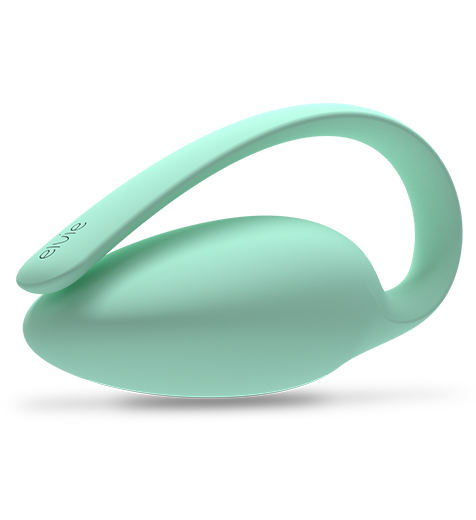Around 1 in 3 women will experience pelvic floor issues in their lifetime, so if you've noticed leaks during certain activities, you're not alone. Pelvic floor issues can be the result of a number of factors including aging, stress, and childbirth.
Following childbirth, most people will regain strength in their pelvic floor muscles within a couple of months, but for some, pelvic floor weakness can persist for months or even years.
Performing pelvic floor muscle exercises before, during, and after pregnancy can help to prevent pelvic floor issues, while it can also enable you to build back strength in your pelvic floor to improve bladder and bowel control, enhance sexual sensation, and speed up postnatal recovery.
In this guide, we’re going to look at how pelvic floor exercises can help to improve pelvic floor function and control urine flow.
Your pelvic floor is a powerful layer of muscles that sits like a hammock between your tailbone and pubic bone, supporting your pelvic organs such as your bladder and uterus. It plays an important role in core stability, bladder control, postnatal recovery, and even sex.
Your pelvic floor muscles act as a support structure within your body. If your pelvic floor muscles are not strong enough, they’re unable to tighten and relax as they should. This can lead to pelvic floor issues such as urinary incontinence and constipation.
Pelvic floor dysfunction is surprisingly common, affecting one in three women and up to 70% of expectant and new moms¹. A weak pelvic floor can be the result of a range of factors, including weight gain, high-impact sport, aging, pregnancy, or childbirth.
Most commonly, weak pelvic floor muscles are associated with bladder control issues: from occasional leaks when you laugh, sneeze or jump, to the frequent and urgent need to pee.
Other symptoms of weak pelvic floor muscles include lower-back pain and, in more advanced cases, pelvic organ prolapse. Fortunately, there is usually plenty that can be done to limit symptoms or even prevent them altogether.
If you’re suffering from pelvic floor dysfunction, there are a number of ways you can strengthen the pelvic floor muscles and reduce stress incontinence. The most common and effective way is through pelvic floor exercises known as Kegels — a type of pelvic floor therapy — while there are also several other methods to strengthen the pelvic muscles, including yoga.
To treat pelvic floor dysfunction and improve strength, experts recommend Kegel exercises. Kegels are simple to do, and when performed correctly and regularly they can improve pelvic floor strength within 6 to 8 weeks — although of course, every woman is different and it may take longer to see results.
What are Kegel exercises?
Kegel exercises (also known as Kegels, Kegel training, pelvic floor exercises or pelvic floor muscle training) are targeted exercises that train and strengthen the pelvic floor muscles. Regular Kegel exercises can improve pelvic floor dysfunctions, including urinary and bowel incontinence².
Pelvic floor training programs can help to improve core strength and stability as well as posture. They also help to support bladder control during pregnancy, speed up postnatal recovery and reduce the risk of prolapse³.
When it comes to sex, Kegels build muscle strength, increase sensation and boost blood flow to the vagina, which in turn helps you to experience stronger orgasms⁴.
So whether you're looking to treat incontinence, avoid issues further down the line, or achieve stronger orgasms during sex, you’ll be glad you did your Kegels.
How to do Kegel exercises
Kegels are easy to perform when you know how. They involve contracting your pelvic floor muscles in a series of exercises. To perform Kegel exercises, follow these steps:
Find your pelvic floor muscles: You can identify your pelvic floor muscles by attempting to stop your pee mid-flow (if you can hold your pee for a second or two, you’re using the right muscles). Once you’ve located the correct muscles, you’ll be able to do the exercises in any position.
Lift and relax: Squeeze and lift your pelvic floor muscles. Hold this contraction for five seconds and then relax for five seconds. Repeat this sequence five times. The best position is to sit with your knees and feet apart and lean forward with your elbows resting on your knees.
Focus on the pelvic floor: For optimum results, make sure you only contract your pelvic floor muscles. Keep the muscles in your abdomen, thighs and buttocks relaxed.
Don’t hold your breath: Make sure you exhale while you’re contracting the muscles and inhale while you’re relaxing the muscles.
Repeat your Kegel exercises daily: If you’re hoping to treat symptoms of stress urinary incontinence, for example, it’s advised that you repeat your Kegels three times a day. Try to aim for three sets of five repetitions daily, gradually working up to 10-second contractions.
When it comes to pelvic floor issues, as with most things, prevention is better than cure. Many people don’t realize the importance of Kegel exercises until after childbirth. However, performing your Kegels before and during pregnancy can help to prevent pelvic issues that may arise from pregnancy and childbirth.
Crucially, Kegels need to be performed regularly and correctly to be effective. We understand it can be difficult to motivate yourself to work out a part of your body that you can't see — which is why many women get bored and give up — but it’s important to persevere. You’ll thank yourself later!
Perhaps you find it difficult to perform Kegel exercises — there may be a medical reason you’re unable to do them, for example — or maybe you’ve mastered Kegels and you’re looking for some more challenging exercises to engage the pelvic floor. Either way, there are a number of other methods you can use to help strengthen the pelvic floor muscles.
How to strengthen the pelvic floor without Kegels
Whether you’re unable to perform Kegels or you’re looking for ways to supplement your daily Kegel exercises, alternative pelvic floor-strengthening techniques include:
Yoga: Yoga is great for strengthening pelvic floor muscles as it engages the diaphragm, abdominals and obliques, all of which play a key role in pelvic floor health. Some of the most effective yoga poses for improving pelvic floor strength include child’s pose, malasana, and the legs-up-the-wall pose.
Ab and core exercises: Engaging the core and lower abdominal muscles is a great way to improve pelvic floor strength, particularly if you’re looking for a more challenging workout in addition to Kegels. Exercises that effectively target the pelvic floor muscles include bridges and wall squats. Jumping Jacks are high impact and can cause pelvic muscle damage. They often trigger stress urinary incontinence. Modified jumping jacks which decrease the impact would be a better alternative.
Biofeedback: Biofeedback is a pelvic floor strengthening treatment which uses special sensors to record information about muscle activity, enabling you to ‘visualize’ pelvic floor movements and perform pelvic floor exercises effectively. The Elvie Trainer uses biofeedback technology to give your pelvic floor the best possible workout.
Breathing exercises: The pelvic floor moves up and down with your diaphragm, so learning breathing techniques can help to promote better pelvic floor strength. Try to relax the muscles completely as you breathe in, then contract your muscles upwards when you breathe out.
Does walking strengthen pelvic floor muscles?
A brisk 30-minute walk a few times per week can help to strengthen the pelvic floor muscles. Try walking somewhere with a gentle incline, which will make the walk a little more physically challenging and help to engage your glute muscles.
Does running strengthen pelvic floor muscles?
Running puts a lot of pressure on the pelvic floor muscles, and therefore regular running can actually cause pelvic floor damage. It can also trigger stress incontinence. It’s best to avoid high-impact exercise such as running until you’re confident your pelvic floor muscles are strong and healthy. However, if you can’t even think of hanging up your running shoes, check out our tips on how to reduce impact on your pelvic floor when running.
Does jumping rope strengthen pelvic floor muscles?
Jumping rope can be an effective way of helping to improve pelvic floor strength and reduce urinary incontinence. It’s normal to experience some bladder leakage when you try it for the first time, but by engaging your core while you jump and keeping to a moderate intensity, jumping rope can strengthen your pelvic floor muscles over time.
Does cycling strengthen pelvic floor muscles?
Cycling is unlikely to help strengthen your pelvic floor muscles specifically. That said, the impact on your pelvic floor while cycling is relatively low, so you can enjoy all the benefits of cycling — such as improved cardiovascular fitness, increased joint mobility and a reduction in stress — without damaging your pelvic floor muscles.
Elvie Trainer helps you to strengthen and tone your pelvic floor muscles with specialized workouts that improve bladder control, postnatal recovery, and intimate wellbeing.
We designed Elvie Trainer to be fun, challenging and motivating, so that you can get the most out of your Kegels. Elvie Trainer uses biofeedback technology, which is shown to be the most reliable way to encourage commitment and improve outcomes from pelvic floor muscle training⁵. Until recently, this technology existed almost exclusively in hospitals.
Elvie Trainer allows you to effectively perform your Kegels at home — or anywhere. The small, sleek device is inserted like a tampon and connects to an app on your smartphone, which visualizes your pelvic floor movements in real time and guides you through exercises designed by pelvic floor specialists to strengthen and tone your pelvic floor.
Unfortunately, 30% of women don't exercise correctly, pushing down rather than lifting up the pelvic floor muscles⁶. Unlike any other at-home biofeedback pelvic floor exercise tool, Elvie Trainer's patented force and motion sensor system detects if you are pushing down and alerts you via the app, helping you to get it right⁷.
[1] Price, N. et al. (2010). ‘Pelvic floor exercise for urinary incontinence: A systematic literature review.’ Maturitas, 67(4), 309-15.
[2] Dumoulin, C. et al. (2015). ‘2014 consensus statement on improving pelvic floor muscle training adherence: International Continence Society 2011 State-of-the-Science Seminar.’ Neurourology and Urodynamics, 34(7), 600–605.
[3] Dumoulin, C. et al. (2015). ‘2014 consensus statement on improving pelvic floor muscle training adherence: International Continence Society 2011 State-of-the-Science Seminar.’ Neurourology and Urodynamics, 34(7), 600–605.
[4] Lowenstein, L. et al. (2010) ‘Can stronger pelvic muscle floor improve sexual function?’ International Urogynecology Journal, 21(5), 553-556.
[5] Glavind, K. et al. (1996). ‘Biofeedback and physiotherapy versus physiotherapy alone in the treatment of genuine stress urinary incontinence.’ International Urogynecology Journal, 7(6), 339–343.
[6] Bø, K. (2004). ‘Urinary incontinence, pelvic floor dysfunction, exercise and sport.’ Sports Medicine, 34(7), 451–464.
[7] McCarthy, S. (2017) ‘Does Elvie compare with real-time transperineal ultrasound measurement of urethral movement direction?’ Journal of Pelvic, Obstetric and Gynaecological Physiotherapy, 120, 69-70.







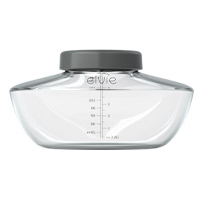
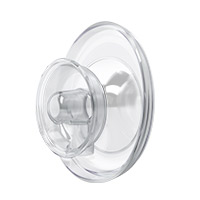

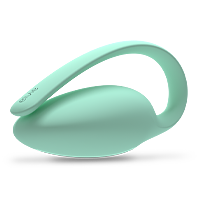
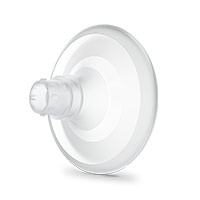
 2 minute read
2 minute read